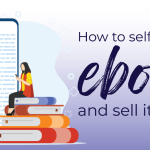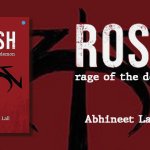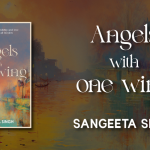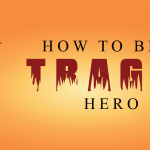Publishing a book is a dream for many aspiring writers and authors. In India, a country rich in literary heritage and diverse storytelling traditions, the publishing industry continues to thrive. However, navigating the process of publishing a book can be daunting, especially when it comes to understanding the associated costs.
In this blog, we will delve into the various expenses involved in publishing a book in India. From manuscript preparation to printing and marketing, we will break down the costs and provide insights to help aspiring authors make informed decisions.
Manuscript Preparation
Manuscript preparation is a crucial initial phase in the intricate process of bringing a book to publication. This fundamental step involves the meticulous crafting, editing, and formatting of the manuscript to meet the rigorous standards set by the publishing industry.
The journey begins with the author’s creative endeavour in writing the manuscript. The author pours heart and soul into crafting a compelling narrative, developing characters, and building a world that captivates readers. However, the raw creation is just the beginning; the manuscript undergoes a transformative process to elevate it to professional standards.
Editing plays a pivotal role in refining the manuscript. While some authors may choose to self-edit initially, hiring a professional editor is often recommended. A professional editor brings a fresh perspective, keen attention to detail, and a wealth of experience to the manuscript.
They meticulously review the text for grammar, syntax, and coherence, ensuring that the narrative flows seamlessly. Moreover, they provide valuable insights into the overall structure, character development, and plot coherence, contributing to the enhancement of the manuscript’s quality.
Cost: The cost of editing services can vary depending on the length and complexity of the manuscript. On average, freelance editors in India may charge anywhere from Rs. 1,000 to Rs. 5,000 per 1,000 words.
Book Design and Layout
After the meticulous process of manuscript preparation, the next crucial step in the journey of publishing a book in India is the design and layout phase. This phase holds paramount importance as it involves creating the visual elements that will capture the reader’s attention and enhance their overall reading experience.
The book cover, often referred to as the face of the book, plays a pivotal role in influencing a potential reader’s decision to pick it up. A well-designed book cover should not only be visually appealing but also convey the essence and theme of the book. It serves as the first impression and is a powerful marketing tool. Authors may choose to collaborate with a professional book designer or use self-publishing platforms that offer cover design templates.
The interior layout is equally significant, contributing to the overall readability and enjoyment of the book. An aesthetically pleasing layout ensures that the text flows seamlessly, with proper formatting, fonts, and spacing. The goal is to create a visually engaging environment that complements the content and provides a comfortable reading experience. Professional designers are adept at balancing elements like margins, fonts, and chapter headings to create a harmonious layout.
Authors must consider the genre and target audience while designing both the cover and interior layout. For instance, a vibrant and dynamic design might be suitable for a young adult novel, while a more sophisticated and minimalist approach might be fitting for literary fiction. Consistency in design elements throughout the book contributes to a cohesive and polished final product.
While professional book designers can be hired to handle the design and layout, some authors choose to take on the task themselves, especially with the availability of user-friendly design software. Regardless of the approach, investing time and effort into creating an eye-catching cover and a reader-friendly layout is an essential part of ensuring the success of the book in a competitive market.
Cost: Hiring a professional book designer can cost anywhere from Rs. 10,000 to Rs. 50,000, depending on the complexity of the design and the designer’s experience.
You may also like: From Page to Sound: How Audio Books Have Transformed Reading
Printing
Printing constitutes a substantial portion of the overall expenses incurred in the publishing process, particularly for authors choosing traditional printing methods. The costs associated with printing are influenced by various factors, each playing a crucial role in determining the final financial commitment.
One key determinant is the quality of paper selected for the book. The choice of paper can significantly impact the overall aesthetics and durability of the final product. Higher-quality paper tends to be more expensive, but it can enhance the visual appeal and tactile experience for readers. Conversely, opting for lower-quality paper may reduce costs but could compromise the book’s overall quality.
The printing technique employed is another factor contributing to the expenses. Authors can choose between offset printing and digital printing, each with its own associated costs. Offset printing, suitable for larger print runs, often requires the creation of printing plates, resulting in higher initial setup costs. On the other hand, digital printing allows for more flexibility with smaller print runs and eliminates the need for extensive setup, making it a cost-effective option for limited quantities.
The quantity of copies to be printed is a crucial consideration that directly impacts the per-unit cost. Printing in bulk typically reduces the cost per copy, making it a more economical choice for authors expecting higher demand. However, printing in smaller quantities may be preferable for authors testing the market or with budget constraints.
Cost: Printing costs typically range from Rs. 50 to Rs. 200 per copy for a standard paperback book. However, printing in bulk can result in lower per-unit costs.
ISBN and Copyright Registration
Securing an International Standard Book Number (ISBN) and copyright registration are critical steps in the process of publishing a book. These identifiers not only provide legal protection but also contribute to the book’s recognition and accessibility.
An ISBN is a unique numerical code assigned to a book, serving as a universal identifier. It plays a crucial role in the distribution and marketing of a book. Obtaining an ISBN for your book is essential, especially if you plan to make it available through bookstores, libraries, or online retailers. This distinctive number allows for accurate tracking, ensuring that the right book reaches the right readers. In India, the process of obtaining an ISBN is facilitated by the Raja Rammohun Roy National Agency for ISBNs (ISBN India). Authors can apply for an ISBN online, and the assigned number will be linked to their work, making it easily searchable and identifiable in databases worldwide.
Copyright registration is another vital aspect of protecting intellectual property. While copyright automatically applies to original works upon creation, registering your book with the Copyright Office provides additional legal benefits. It offers a public record of ownership, making it easier to establish authorship in cases of dispute. In India, copyright registration is managed by the Copyright Office under the Copyright Act, 1957. Authors can submit their manuscripts along with the prescribed application and fee to secure copyright protection for their literary works.
The combination of an ISBN and copyright registration provides a robust shield for authors against unauthorised use or reproduction of their work. Together, they establish a clear legal framework, fostering confidence in the author’s ownership rights. This protection becomes especially crucial in the dynamic landscape of publishing, where digital platforms and global distribution networks make it imperative to safeguard creative content.
Cost: In India, obtaining an ISBN typically costs around Rs. 1,000 to Rs. 2,000 per book, while copyright registration fees start from Rs. 500 onwards.
You may also like: Insights from Bestselling Authors: The Art of Storytelling
Distribution and Marketing
Distribution and marketing are pivotal phases in the book publishing journey, determining the success and visibility of an author’s work. After the meticulous processes of manuscript preparation, book design, and printing, the focus shifts towards making the book accessible to the intended readership.
Distribution channels serve as the arteries through which the book flows to various outlets. Bookstores, both independent and chain retailers, offer a physical space for readers to discover and purchase the book. Securing placement in well-known bookstores can significantly enhance the book’s visibility and credibility. Online retailers, including e-commerce platforms and dedicated book websites, broaden their reach to a global audience. Libraries, as community hubs for knowledge and literature, contribute to the book’s accessibility, often resulting in increased exposure.
Effective marketing is the heartbeat that sustains an author’s connection with readers. Book launches are crucial events, marking the official introduction of the book to the world. These events provide a platform for authors to share insights, engage with their audience, and build anticipation. Author signings create a personal connection, allowing readers to associate a face and personality with the written words. These interactions can leave a lasting impression and encourage word-of-mouth recommendations.
Online promotions leverage the digital landscape, utilising social media, author websites, and promotional platforms to create buzz. Social media campaigns, including teaser trailers, author interviews, and interactive content, capture the attention of potential readers. Engaging with book bloggers and influencers amplifies the book’s visibility in the online sphere.
Book reviews, whether from reputable publications or reader testimonials, act as endorsements that influence potential readers’ decisions. Securing reviews from influential sources can significantly impact the book’s credibility and marketability.
Cost: Distribution and marketing costs can vary widely depending on the author’s budget and marketing strategy. Hiring a publicist or marketing agency may incur additional expenses, ranging from a few thousand rupees to lakhs, depending on the scope of services.
E-book Conversion (Optional)
In the ever-evolving landscape of publishing, authors are increasingly recognising the importance of embracing digital formats to broaden their readership. One crucial avenue in this digital realm is the conversion of manuscripts into e-books, a process that opens doors to a vast and diverse audience. E-book conversion is optional but has become a valuable asset for authors seeking to reach readers on various digital platforms.
E-book conversion is essentially the transformation of a manuscript into a format compatible with digital reading devices and applications. The most common formats for e-books include Kindle, ePub, and PDF. Each format caters to specific devices and platforms, ensuring a seamless reading experience for users across various e-book readers, tablets, and smartphones.
Authors opt for e-book conversion for several compelling reasons. Firstly, it allows them to tap into the rapidly growing market of digital readers. With the prevalence of e-readers like the Kindle and the widespread use of e-reading apps, authors can transcend geographical boundaries and make their work accessible to a global audience.
Moreover, e-books offer readers the convenience of carrying an entire library in their pocket, facilitating easy access to their favourite titles anytime and anywhere. This accessibility factor significantly contributes to the popularity of e-books in today’s fast-paced world.
The process of e-book conversion involves careful formatting to ensure that the digital version mirrors the print edition accurately. Design elements such as fonts, spacing, and images must be optimised for electronic viewing. Professional e-book conversion services can assist authors in navigating the intricacies of this process, ensuring a polished and reader-friendly digital presentation.
While e-book conversion is optional, its benefits are evident in the expanded reach and convenience it provides to both authors and readers. As the digital reading landscape continues to evolve, embracing e-book publishing has become a strategic choice for authors looking to adapt to changing reader preferences and technological advancements.
Cost: E-book conversion services typically range from Rs. 1,000 to Rs. 5,000, depending on the complexity of the formatting and the number of platforms supported.
Read: Here’s a list of 10 Famous self-published authors in UK.
Publishing a book in India involves various costs, from manuscript preparation to distribution and marketing. While self-publishing offers greater control and flexibility, traditional publishing may provide access to broader distribution networks and professional support.
Ultimately, the decision to publish a book and the associated costs depend on the author’s goals, budget, and desired outcomes. By understanding the expenses involved and exploring available options, aspiring authors can navigate the publishing process more effectively and bring their literary creations to life.
Publish your book with BlueRoseONE and become a bestselling author. Don’t let your dream of becoming an author fade away, grab the opportunity now and publish your book – be it fiction, non fiction, poetry or more.
















